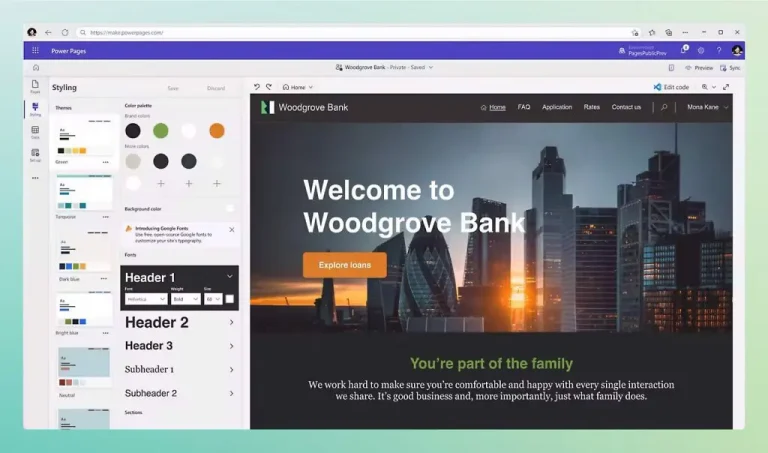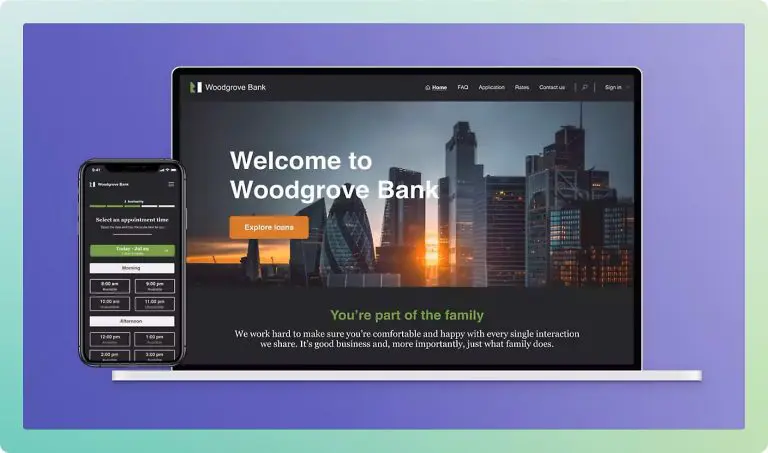
Photo Courtesy of Microsoft
One of the main components of the Microsoft Power Platform, Power Pages enable businesses to create flexible, low-code, and customised websites and portals with ease. These websites serve both internal and external users by enabling user interactions with particular Dynamics 365 / Dataverse data and features.
With only a little code needed, Power Apps Portals may be used to create a variety of external-facing apps, such as employee self-service portals, partner portals, customer portals, and more.
With the wide range of customisation possibilities offered by Power Pages, businesses may modify the appearance and feel of their portals to better suit their branding and user experience standards. For external users, users may build a seamless and branded experience by customising layouts, themes, and gateway page design.
Azure Active Directory, custom authentication providers, and social logins (including Microsoft, Google, and LinkedIn) are just a few of the authentication mechanisms that Power Pages offer. By enabling companies to decide who has access to what portal content or services, this guarantees safe access control. User roles and permissions inside the portal can also be defined through the use of role-based access control, or RBAC.
SQL Server, SharePoint, Microsoft Dataverse (previously known as Common Data Service), and custom APIs are just a few of the data sources and services that Power Pages may interface with. Through the portal, this enables businesses to make data and procedures available to outside users. For example, consumers may check their order history, submit support requests, or update their profiles.
Power Platform components like Power Automate and Power Apps may be used to enhance and automate Power Pages. This implies that you may build interactive, responsive forms and apps within the portal, automate workflows, and initiate activities depending on user inputs. Furthermore, Liquid templates for dynamic content rendering and scripting for further customisation are supported by Power Pages.

Photo Courtesy of Microsoft

Photo Courtesy of Microsoft

Photo Courtesy of Microsoft

Photo Courtesy of Microsoft

Photo Courtesy of Microsoft

Photo Courtesy of Microsoft